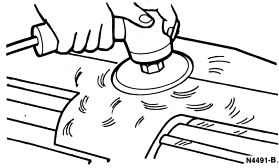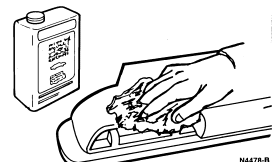
Section 01-00: Body—Service | 1993 Mustang Workshop Manual |
Tools Required:

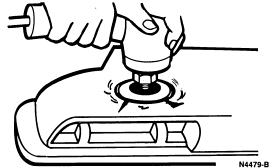
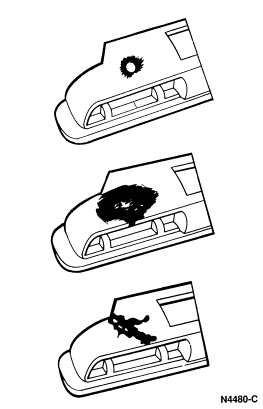
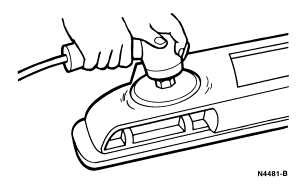
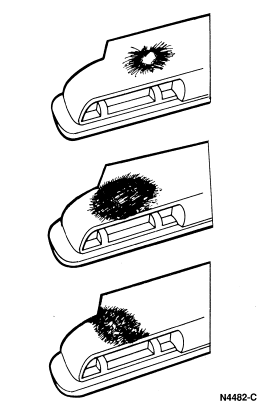
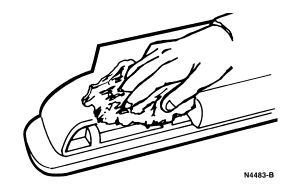
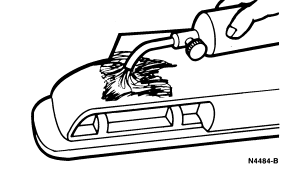
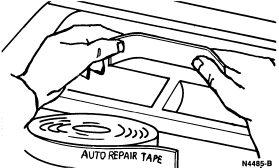
NOTE: To prevent air bubbles during mixing, the components should be scraped together with downward pressure and spread thinly on the mixing board. Adhesive should be used within two minutes after mixing. Observe safety precautions when handling adhesive.
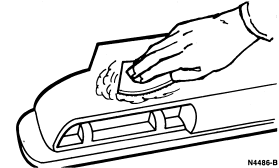
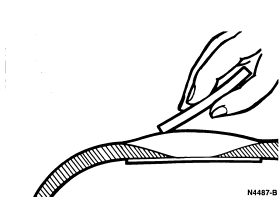

NOTE: The adhesive can be sanded after the 20 minutes heat (lamp or gun) cure, or after one hour at room temperature 22°C (72°F).
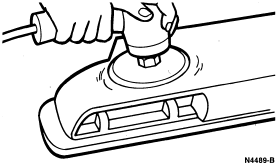
NOTE: Sanding in two directions tends to lift edges and spoil the service.
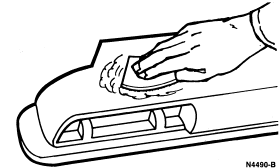
NOTE: Spot or glazing putty cannot be used for elastomeric (soft) grille opening panel repair.
